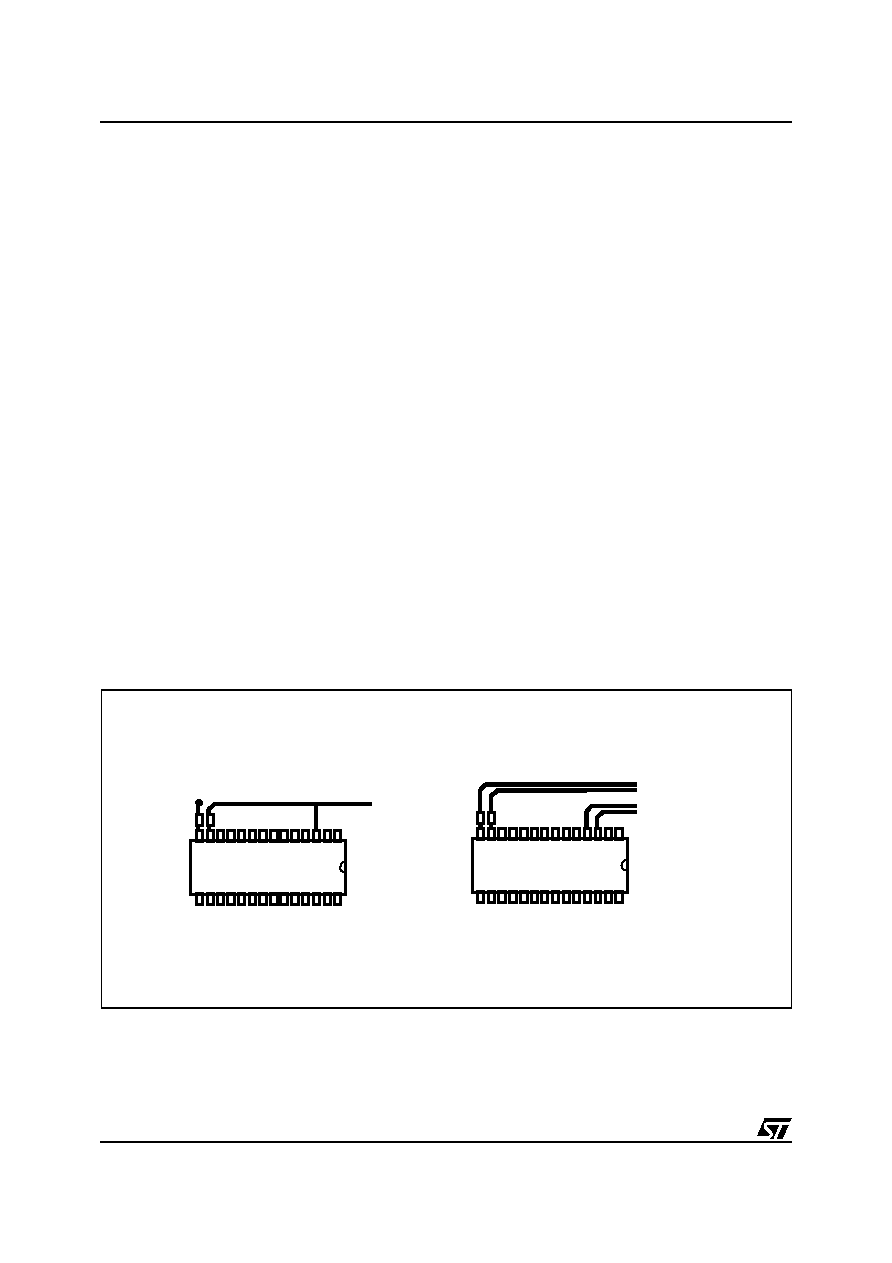- 您現(xiàn)在的位置:買賣IC網(wǎng) > PDF目錄43901 > L6919CD (STMICROELECTRONICS) SWITCHING CONTROLLER, 200 kHz SWITCHING FREQ-MAX, PDSO28 PDF資料下載
參數(shù)資料
| 型號: | L6919CD |
| 廠商: | STMICROELECTRONICS |
| 元件分類: | 穩(wěn)壓器 |
| 英文描述: | SWITCHING CONTROLLER, 200 kHz SWITCHING FREQ-MAX, PDSO28 |
| 封裝: | SO-28 |
| 文件頁數(shù): | 15/32頁 |
| 文件大小: | 558K |
| 代理商: | L6919CD |
第1頁第2頁第3頁第4頁第5頁第6頁第7頁第8頁第9頁第10頁第11頁第12頁第13頁第14頁當前第15頁第16頁第17頁第18頁第19頁第20頁第21頁第22頁第23頁第24頁第25頁第26頁第27頁第28頁第29頁第30頁第31頁第32頁

L6919C
22/32
– An additional 100nF ceramic capacitor is suggested to place near HS mosfet drain. This helps in reduc-
ing noise.
– PHASE pin spikes. Since the HS mosfet switches in hard mode, heavy voltage spikes can be observed
on the PHASE pins. If these voltage spikes overcome the max breakdown voltage of the pin, the device
can absorb energy and it can cause damages. The voltage spikes must be limited by proper layout, the
use of gate resistors, Schottky diodes in parallel to the low side mosfets and/or snubber network on the
low side mosfets, to a value lower than 26V, for 20nSec, at FSW of 600kHz max.
s
Current Sense Connections.
Remote Buffer: The input connections for this components must be routed as parallel nets from the FBG/FBR
pins to the load in order to compensate losses along the output power traces and also to avoid the pick-up of
any common mode noise. Connecting these pins in points far from the load, will cause a non-optimum load reg-
ulation, increasing output tolerance.
Current Reading: The Rg resistor has to be placed as close as possible to the ISENx and PGNDSx pins in
order to limit the noise injection into the device. The PCB traces connecting these resistors to the reading point
must be routed as parallel traces in order to avoid the pick-up of any common mode noise. It's also important
to avoid any offset in the measurement and to get a better precision, to connect the traces as close as possible
to the sensing elements, dedicated current sense resistor or low side mosfet RdsON.
Moreover, when using the low side mosfet RdsON as current sense element, the ISENx pin is practically con-
nected to the PHASEx pin. DO NOT CONNECT THE PINS TOGETHER AND THEN TO THE HS SOURCE!
The device won't work properly because of the noise generated by the return of the high side driver. In this case
route two separate nets: connect the PHASEx pin to the HS Source (route together with HGATEx) with a wide
net (30 mils) and the ISENx pin to the LS Drain (route together with PGNDSx). Moreover, the PGNDSx pin is
always connected, through the Rg resistor, to the PGND: DO NOT CONNECT DIRECTLY TO THE PGND! In
this case the device won't work properly. Route anyway to the LS mosfet source (together with ISENx net).
Right and wrong connections are reported in Figure 17.
Symmetrical layout is also suggested to avoid any unbalance between the two phases of the converter.
Figure 17. PCB layout connections for sense nets
Wrong (left) and correct (right) connections for the current reading sensing nets.
NOT CORRECT
CORRECT
To PHASE
connection
VIA to GND plane
To HS Gate
and Source
To LS Drain
and Source
相關PDF資料 |
PDF描述 |
|---|---|
| L6919E | SWITCHING CONTROLLER, PDSO28 |
| L6920DTR | 1.2 A SWITCHING REGULATOR, PDSO8 |
| L6920D | 1.2 A SWITCHING REGULATOR, PDSO8 |
| L6920 | 1.2 A SWITCHING REGULATOR, PDSO8 |
| L6924D013TR | 1-CHANNEL POWER SUPPLY SUPPORT CKT, QCC16 |
相關代理商/技術參數(shù) |
參數(shù)描述 |
|---|---|
| L6919CDTR | 功能描述:DC/DC 開關控制器 Prog Dual-Phase Cont RoHS:否 制造商:Texas Instruments 輸入電壓:6 V to 100 V 開關頻率: 輸出電壓:1.215 V to 80 V 輸出電流:3.5 A 輸出端數(shù)量:1 最大工作溫度:+ 125 C 安裝風格: 封裝 / 箱體:CPAK |
| L6919E | 功能描述:DC/DC 開關控制器 5-Bit Dual Ph Contlr RoHS:否 制造商:Texas Instruments 輸入電壓:6 V to 100 V 開關頻率: 輸出電壓:1.215 V to 80 V 輸出電流:3.5 A 輸出端數(shù)量:1 最大工作溫度:+ 125 C 安裝風格: 封裝 / 箱體:CPAK |
| L6919ETR | 功能描述:DC/DC 開關控制器 5-Bit Dual Ph Contlr RoHS:否 制造商:Texas Instruments 輸入電壓:6 V to 100 V 開關頻率: 輸出電壓:1.215 V to 80 V 輸出電流:3.5 A 輸出端數(shù)量:1 最大工作溫度:+ 125 C 安裝風格: 封裝 / 箱體:CPAK |
| L-692 | 制造商:RHOMBUS-IND 制造商全稱:Rhombus Industries Inc. 功能描述:Common Mode Inductor |
| L6920 | 制造商:STMICROELECTRONICS 制造商全稱:STMicroelectronics 功能描述:1V HIGH EFFICIENCY SYNCRONOUS STEP UP CONVERTER |
發(fā)布緊急采購,3分鐘左右您將得到回復。